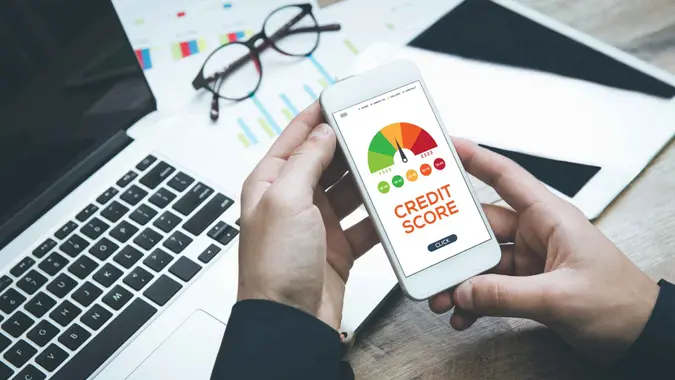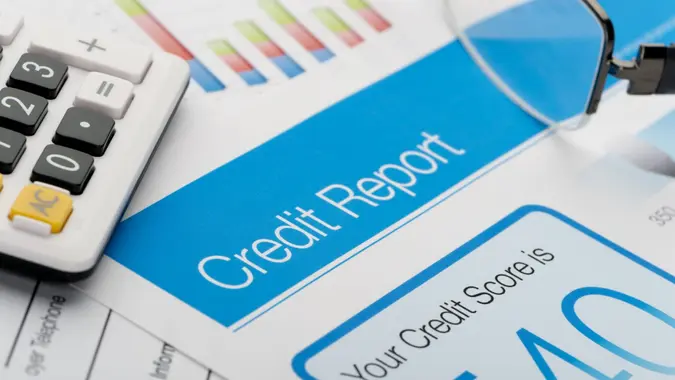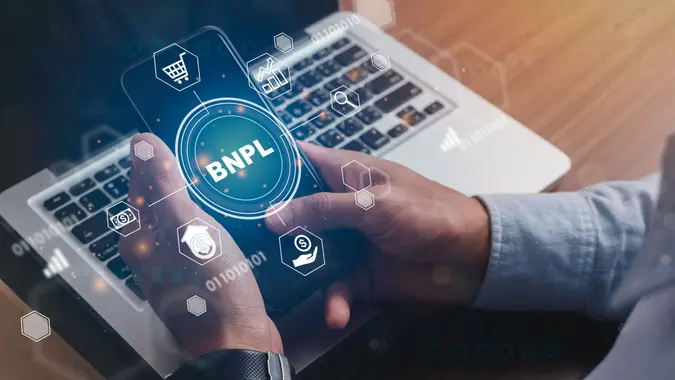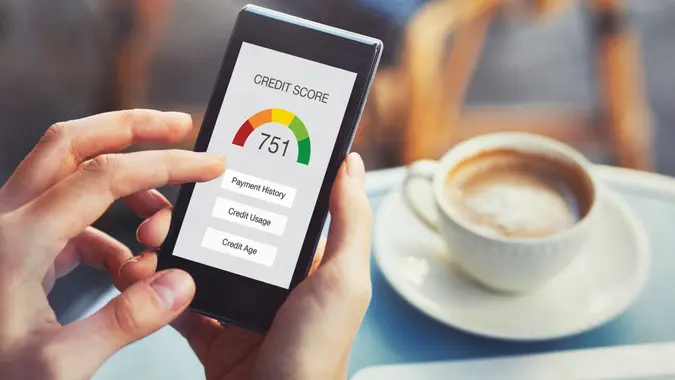Is No Credit Better Than Bad Credit?

Commitment to Our Readers
GOBankingRates' editorial team is committed to bringing you unbiased reviews and information. We use data-driven methodologies to evaluate financial products and services - our reviews and ratings are not influenced by advertisers. You can read more about our editorial guidelines and our products and services review methodology.

20 Years
Helping You Live Richer

Reviewed
by Experts

Trusted by
Millions of Readers
Having no credit or bad credit can work against borrowers and each can bring significant financial consequences. But if you had to choose, no credit history at all is usually better than one littered with blemishes.
Understanding how each situation impacts your creditworthiness can make a big difference in reaching your money goals. Let’s break it down and help you figure out the best way forward.
| Factor | No Credit | Bad Credit |
|---|---|---|
| Lender Risk Perception | Unknown risk | Known risk with negative history |
| Credit Score | None | 300-579 (typically) |
| Loan Approval Chances | Limited but possible | Often rejected or high-interest |
| Path to Improvement | Starts from scratch | Rebuilding from negative history |
| Access to Credit Products | Limited options | Specialized high-interest products |
What Does It Mean to Have No Credit?
When people have no credit, it means the credit bureaus — TransUnion, Equifax and Experian — have little or no information about their history of borrowing and repaying money. You’re considered “credit invisible.” You don’t generate a credit report by having a Social Security number or even opening a bank or brokerage account.
So-called credit invisibles have no verifiable history of taking out loans, utilizing credit or making or missing payments because:
- They’re young adults who have never used credit or borrowed money before
- They’re immigrants who are new to the country
- They’ve relied primarily on cash and debit cards
- Their history is “stale” — they had accounts, but stopped using them for extended periods
How to Start Building Credit from Scratch
Good news: if you have no credit, you’re a blank slate — and you can start building a positive credit history from day one. Here’s how:
Instead, they can:
- Get a secured credit card, which require cash deposits that serve as the card’s credit limit. Credit invisibles might also have better approval odds with student cards and retail cards.
- Become an authorized user and secondary cardholder on a trusted account.
- Apply for a credit-builder loan.
- Use rent and utility reporting services that inform the credit bureaus of your on-time payments.
- Pay all bills on time and in full — nothing is more important to your long-term credit health.
According to American Express, it takes at least six months to build enough history to generate a credit score when starting from scratch, and longer to achieve very good or excellent credit.
When pursuing starter loans or cards, apply with caution and only after careful consideration — rejections and multiple recent applications make lenders take pause.
What Is Considered Bad Credit?
Different lenders have different criteria, but generally, bad credit is:
- A FICO score below 580. Used by most lenders, FICO is the most popular scoring model, which ranges from 300 to 850.
- A Vantage score below 600. The Vantage scoring spectrum also ranges from 300 to 850.
Both scoring models consider similar factors, and applicants with bad credit appear risky to lenders because their reports show some or all of the following:
- Late payments
- Missed payments
- Defaults
- High credit utilization ratios
- Judgments or liens
- Limited accounts
- Too many recent applications for loans or credit
How to Rebuild Bad Credit
Rebuilding bad credit is challenging because you must make all the positive moves required to build credit from scratch while also working to undo the damage. You’ll need to:
- Understand how credit reports and scores work — reporting agencies can show late payments and most other negative marks for up to seven years, but their impact diminishes over time with responsible use.
- Catch up on past due balances and petition lenders to remove settled accounts.
- Reduce credit utilization by expanding your open credit and paying down balances.
- Dispute errors on your credit report — even mistakes with non-financial information like incorrect addresses can ding your score.
- Limit new credit applications — multiple applications in a short time can make borrowers appear desperate to lenders.
- Use a secured card and other credit-building tools to demonstrate good habits and responsible use.
Pros and Cons of No Credit and Bad Credit
Pros of no credit:
- No negative history
- Easier to build a clean credit record
- Less stigma compared to bad credit
Cons of no credit:
- No track record for lenders to assess
- May need co-signers or upfront deposits
- Limited options for credit products
Pros of bad credit:
- Credit history exists, so lenders have data
- Can qualify for some subprime products
Cons of bad credit:
- Higher interest rates and fees
- Can take years to rebuild
- May limit housing, job, and loan opportunities
The Bottom Line
So, is no credit better than bad credit? Generally, yes — having no credit gives you a clean slate, while bad credit requires repair. But both situations can limit your access to credit products.
The good news? You can build or rebuild your credit with simple, consistent steps.
Ready to take charge of your financial future? Start by reviewing your credit report, exploring secured credit card options or learning how to improve your credit mix.
FAQ
- Can I get a credit card with no credit?
- Yes, but expect limited options and stricter terms. Secured cards, retail cards and student cards are often the most receptive to credit invisibles.
- What credit score is considered bad?
- Most lenders use the FICO scoring model and consider anything in the 300-579 range to be bad credit.
- How fast can I build credit from scratch?
- It takes at least six months for most credit invisibles to build a credit profile and get a credit score -- longer to achieve good or excellent credit.
- Is it worse to have no credit or bad credit when applying for a loan?
- Bad credit is typically worse than no credit — credit invisibles have nothing working in their favor, but at least they don’t have any strikes against them and no history of financial mismanagement to make lenders leery. Also, invisibles can build good credit faster than those with bad credit can repair their scores and profiles.
- How do I check my credit score without affecting it?
- You can check your score at any time without impacting it by using your banking app’s tools, platforms like Credit Karma or by visiting AnnualCreditReport.com.
 Written by
Written by  Edited by
Edited by 






















